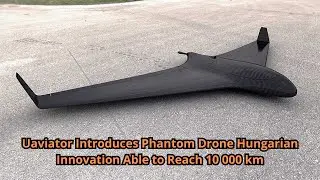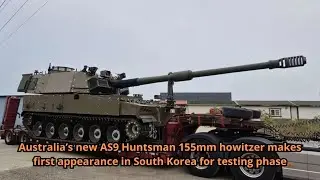Pantsyr Self-Propelled Air Defense Gun/Missile System (Russia)
The Pantsyr (Western reporting name SA-22 Greyhound) is a short-range air defense system. It was designed to protect strategic military and civil point targets. It was originally designed to meet requirements of Russian Air Defense Forces (PVO). This system is capable of engaging a wide variety of aerial targets, such as aircraft, helicopters, ballistic and cruise missiles, guided bombs and UAVs. Developers claim that it is also capable of engaging stealthy aircraft, such as the F-22 and F-35. It was first publicly revealed in 1995. United Arab Emirates was the first customer of this system. Their order was made back in 2000. The system was trialed in 2006. Deliveries to the United Arab Emirates began in 2007. The Pantsyr-S1 is a version of this system, intended for Russian military. The first 10 Pantsyr-S1 air defense systems were delivered to the Russian Air Force in 2010. It was officially adopted in 2012. It is claimed that by 2014 more than 200 of these air defense systems were produced. In 2017 Russia operated 110 Pantsyr-S1 and newer -S2 systems while more units were scheduled to be delivered. It has also been exported to Algeria (104 units in various versions), Iraq (24 units), Oman (up to 12 units), Syria (up to 40 units) and United Arab Emirates (50 units) and possibly Vietnam. This air defense system was recently ordered by Equatorial Guinea (2 units) and Jordan (50~70). The Pantsyr saw action during the military conflict in Ukraine and Syria. In 2018 at least one Syrian Pantsyr system was destroyed by an Israeli air strike.
The Pantsyr is a further development of the 2S6 Tunguska air defense gun/missile system, based on a tracked chassis. It carries up to 12 surface-to-air missiles in sealed containers. These missiles are ready-to-launch and have a radio-command guidance. The missiles have no seekers. Instead tracking is provided via the launcher vehicle's sensor system. However unlike the Tunguska, the Pantsyr is more of a stationary system, designed to protect point targets.
The 57E6 missile of the Pantsyr has a two-stage solid-fuel rocket motors. It has a maximum speed of 1 000 m/s (Mach 3). Missiles of this air defense system have a maximum range of 20 km. Minimal range is 1 km. Maximum altitude is 8 km.
The Pantsyr also has two dual 30 mm guns, similar to those of the Tunguska. These are derivatives of aircraft cannons. Combined rate of fire of these guns is up to 5 000 rounds per minute. These can engage targets up to 4 km away. A total of 1 400 rounds are carried for these guns.
This air defense system can fire its missiles on the move, however cannons can be fired only when the vehicle is stationary and jacked on four hydraulic jacks. Probability of defeating a single target is around 60-80%, depending on the target type and firing conditions. The Pantsyr also has a limited capability against ground targets and is capable of firing armor-piercing projectiles. Though this capability is mainly intended for self-defense, as the Pantsyr is generally unarmored and would be extremely vulnerable on the battlefield.
The Pantsyr has a multiple-band target acquisition and tracking system. It detects targets at a range of 30 km and has a tracking range of over 24 km. Also there are thermal imaging system and optical tracker. This air defense system can engage two targets simultaneously and is capable of engaging up to 12 targets within one minute. Developers claim that this system has a high jamming resistance.
Some Russian experts report that operational use of this air defense system in Syria revealed that the baseline Pantsyr-S1 struggles to detect small and slow moving targets, such as small UAVs. In one particular case the Pantsyr-S1 expended 13 of its missiles in order to defeat only 3 hostile UAVs.
The Pantsyr air defense system has a reaction time of only 5-6 seconds. It takes 3 minutes to engage a target from travelling. Vehicle is operated by a crew of three, including commander, operator and driver.
The Pantsyr-S1 air defense system, that was adopted by the Russian Air Force, is based on a KamAZ-6560 8x8 military truck chassis. Vehicle is powered by a turbocharged diesel engine, developing 400 hp. It has a full-time all-wheel drive and is fitted with a central tyre inflation system.
First prototype of this air defense system was based on Ural-5323 8x8 truck chassis. Other wheeled chassis were trialed or offered with this system, including KamAZ-6350, MZKT-7930, BAZ-6909 and MAN SX 8x8 truck chassis. The MAN SX chassis is used by United Arab Emirates. It is also offered with a tracked GM-532 series chassis of the Tunguska or BMP-3 infantry fighting vehicle chassis. Furthermore it can be deployed in a stationary module or on naval vessels, depending on customer requirements.



















